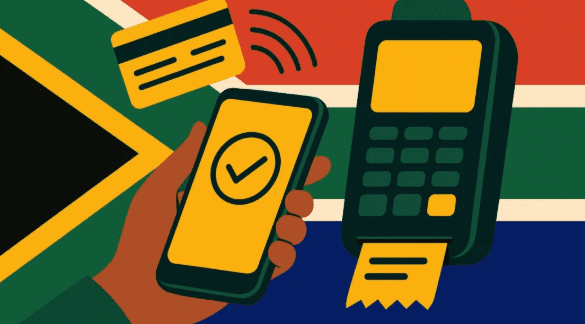As players increasingly reach for their phones instead of heading over to their desktop computers, the online and payment mechanisms are evolving rapidly. We spoke with Ville Saari, Lead Content Manager at Bojoko, to dig into how the mobile shift is reshaping player behaviour, how Canada is catching up, and why payment innovations are gaining an edge over traditional solutions.
Ville, could you first sketch the broad shift you’re seeing in game from desktop to mobile and what’s driving it?
Absolutely. Over recent years, we’ve observed a steady migration of players from desktop computers to mobile devices. The convenience factor here is huge. Someone commuting, waiting for a friend, or simply relaxing at home will instinctively reach for their phone rather than boot up a computer. On the operator side, mobile-first design, seamless UI and app-style experiences have reduced friction. In markets like Canada, although for many years desktop remained dominant, the direction has been clear. Mobile is becoming the channel of choice.
What drives the shift? Firstly, access. Mobile devices are ubiquitous, always on, always connected. Secondly, improvements in mobile infrastructure have made latency and loading far less of a barrier for games that historically needed more horsepower. Thirdly, expectations. Younger players especially expect a native-app feel, fast onboarding, and minimal delays. And lastly, the payment ecosystem is catching up. Playing on mobile means payment must keep pace, and that interplay matters a lot.
How does this shift influence how players engage with online, in terms of session length, behaviour, and game choice?
When players are on mobile, sessions tend to be more spontaneous and shorter in duration compared to a desktop session. They might spin a few rounds between appointments, while travelling, or during short breaks. That doesn’t mean less engagement, but rather, it means more frequent entries, less “sit-down for an hour” and more “play when convenient”.
Game choices also adapt. Operators lean toward mobile-friendly formats, like quick-spin slots, instant win games, simplified interfaces, touch-optimized controls, and less toward heavy, desktop-only immersive titles.
From the player’s side, the expectation is “pickup and play” rather than “set aside time to have fun”. Behaviour also shifts in payment. Players expect instant deposits, minimal steps, and data saved securely from prior sessions so they’re not repeating forms. If payment is slow or cumbersome, the mobile experience suffers significantly.
Turning to payments: how does mobile dominance affect payment solutions?
In a mobile-driven scenario, payment solutions must align with the channel’s speed and convenience. Traditional payment flows like bank transfers, large form-fills, and redirects to external sites introduce friction that breaks the “in the moment” mobile play. So payment solutions designed for mobile, embedded in the flow, win.
Pay by phone bill is particularly interesting. The player can charge the deposit to their mobile carrier bill or prepaid balance. On mobile devices, this is extremely streamlined. No bank login required, minimal form-filling and instant credit. From a user-experience point of view, this is compelling. We have already seen the popularity in other markets, so a pay by phone bill in Canada can expect to have the same results.
From an operator’s perspective, speed means you capture the moment more effectively. The risk model is different. It relies more on carrier relationships than bank verification, and in some jurisdictions or licences, this may carry additional regulatory overhead, but the UX benefit can outweigh that if well managed. In markets where slower, cumbersome payment methods predominate, a mobile-optimized payment option delivers a competitive edge.
Let’s consider Canada specifically. You mentioned that Canada might be behind the more saturated markets, but heading in the same direction. What are the particular dynamics there?
Canada presents a fascinating case. Historically, desktops remained common because -platform providers catered more to traditional flows and banking systems, focusing on more established methods. But that is changing. Canadian operators are increasingly offering mobile-first platforms, smartphone penetration is high, and younger demographics are entering the market expecting mobile experiences.
What might slow the shift somewhat are the differences in provincial regulation and perhaps conservative banking traditions. But the same tailwinds apply. As operators optimize for mobile in Canada, payment solutions that match mobile behaviour will lead.
What are the main challenges or caveats that both operators and payment-providers must consider in this mobile-led world?
Several challenges stand out. For operators it’s designing truly mobile-native UX is not just shrinking a desktop site. It’s rethinking flow, onboarding, loading times, payment journeys, and player identity verification on a small screen.
For players, while convenience is boosted, there’s the risk of oversimplification. Mobile habits may encourage more frequent, shorter plays, which may also lead to impulse behaviour and regulatory scrutiny. From a payments lens, “instant” isn’t always costless, as every payment method has underlying risk and fees.
Another caveat is that in markets where mobile network reliability or data costs are high, desktop still retain value. So the mobile pivot must be thoughtful, not a wholesale abandonment of desktop gaming overnight.
Looking ahead, how do you see the convergence of mobile behaviour and payment innovation shaping how online evolve over the next 2-3 years?
We’ll see a few clear trends. First, seamless onboarding, such as mobile identity verification, will reduce friction so a player can register and deposit in a matter of seconds. Second is embedded payments. Mobile platforms will increasingly integrate payments so that games or apps trigger deposits/withdrawals without redirecting away. Third, alternative mobile-first payment methods will proliferate, especially in markets where bank infrastructure is slower or less mobile-friendly.
For online themselves, the mobile game portfolio will shift further towards more casual formats, shorter-session games and live-mobile streams. Localization will also matter. In Canada and similar markets, operators who upgrade payment flows and mobile experiences ahead of competitors will capture the early mobile‐native audience.



































